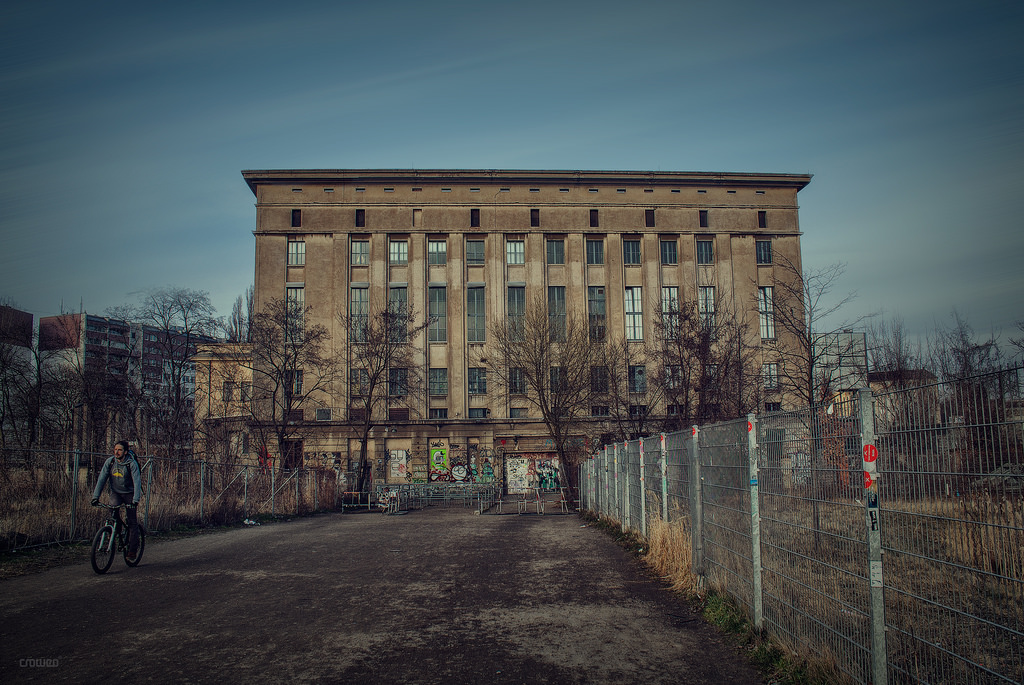Genre is chock full of loaded terms. Once stellar descriptors, their nuances were pilfered by those wanting a slice of popular pie—just hearing Rihanna and Gangsta in the same sentence gives me the heebie jeebies. I mean, 36 Chambers? Yeah, maybe in your Malibu mansion Rhi Rhi.

While the bread and butter of popular music is obviously appropriation, a little effort in distinction wouldn’t go astray. Soul did it—they acknowledged the morphing of their institution with contemporary influences like RnB and hip-hop. Neo-Soul recognises tradition though clearly defines a separation between the two, thus keeping both intact. Intelligent, gracious and respectful.
I could sit here all day banging on about modern pop stars squeezing into trope tee shirts—their watered-down reinventions do amuse me so—though I think I’ll focus on a genre I’ve loved since Carl Cox levelled the Big Day Out Boiler Room in 2008. Techno and it’s once stellar, now wince inducing little brother: minimal.
Detroit, Michigan. Once recognised as the beating heart of American industry, increased competition from foreign auto manufacturers led to major shake ups in both industry and social circumstance. Jobs were lost, hundreds of thousands of homes were abandoned and Detroit was left in eroding metallic descent. Though with its face battered, a heart still beat; a rhythm that united an underprivileged, multi-raced and electric youth.
From within the twisted wire and abandoned brick of Detroit, the first tier of techno was born. Manned by giants like Juan Atkins, Derrick May and Kevin Saunderson their early 1980s textures mirrored the cities strange surroundings, though moved like the manufacturing lines of old. A weird faceless dancer—constant, quirky and resourceful. As this beat scoured the underground, it made sweet groovy babies with Chicago’s burgeoning house scene. The might and interminable force that is dance music then went global.
Skip ahead to 1994. We’re with a guy called Robert Hood. Now, Hood and his mates Jeff Mills and Daniel Bell are growing somewhat tiresome of techno’s current state. Like most things artistic, genre doesn’t stay stagnant for very long—techno included. Dance music in the middle 90s had morphed into a ravey beast. Genre’s like hardcore and gabber pushed the 140bpm mark and techno’s popularity had morphed into a bombastic tribal beating. While it’s totally fine to kick out those hundred-mile an hour jams—Hood, Mills and Bell saw this as a devolution from Detroit sound.
It’s here in 1994 that Robert Hood would release Minimal Nation and with it a sound that reshaped techno over the following decade. The album comprises a minimal approach in groove, its subtle rhythmic shifts and simplistic boppy melodies solidified Hood’s efforts as one of techno’s most influential bodies of work—a feat that still holds today. Hood had threaded the line between inventive repetition and a monotonous reprise.
While Detroit and her contemporaries are most important in this harrowed tale, a discussion on minimal would be in jest without the painting of techno mecca, Berlin. The mid 90s Berlin techno scene rivalled that of Detroit, in that it felt dampened by a shifting gear. For Berlin artists, the over-saturation and commercialisation of techno saw many turn tails for neighbouring cities like Cologne or Frankfurt. Love Parade and May Day celebrations brought hundreds of thousands of revellers to the city, while the genre featured on music television and in magazines. To many jaded locals, the scene had become a sell-out.

As Y2K approached, a new underground began to emerge in east Berlin. The warehouses and abandoned buildings surged, with iconic nightclub Ostgut leading the charge in housing this new entity. Simultaneously, a new wave of artists arrived in Berlin, a wave flaunting new techno ideals—aided by Berlin royalty Basic Channel—it was an approach in minimalism.
At the lead of this new charge was Chilean-born, Ricardo Villalobos. Often releasing tracks in the 10+ minute range, his ideas were an ever-unwinding ball of string—a seemingly endless soundscape of brooding groove. There were no crescendo breaks or intense drops, just an intuitive ride. His 2003 debut album Alcachofa embraced a unique ethos not before seen in electronic music.
Through a supportive culture, this new scene thrived. Promoters, venues, punters and artists were all instrumental in the development of Berlin’s new club scene. There was no competition, just a complete immersion within good music and party culture. The result was a creatively rich city that still prospers today. Many new clubs opened like Watergate, Club der Visionaere, Bar 25 and the infamous Berghain. All were mainstays for the Berlin sound and all, save Bar 25, continue to fly the banner for the cities clubbing identity.
Through those early arrivals, in people like Richie Hawtin for example, Berlin exploded. It was suddenly the middle of cool and totally where everyone had to be. Labels like Minus and Perlon championed the minimal sound, ensuring it reached the far corners of the globe. It’s here, unfortunately, that minimal began to fragment.
As the world began to embrace electronic music, many picked apart the ethos of its genre. Some results were fantastic—a lot of pop and indie artists lending their hand to the endless opportunities created by the synthesiser. Though with the introduction of the internet and production software, accessibility to ‘DJ’ became just a little too easy.
Minimal was picked apart and rehashed, a lot dissolving into the endless mire of tech-house. It became a bad word, definitely not one to be aligned with. Though looking back, what was, and what came after, are clearly defined.
I guess just find your brand and stick with it. I’ll keep mine weird, stripped back and funky thanks.






